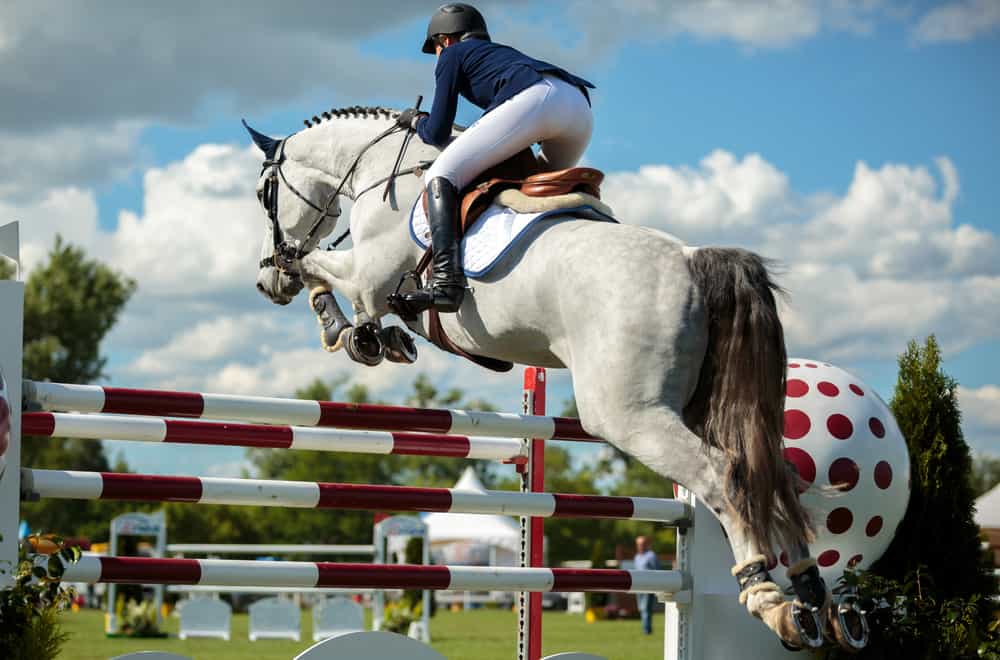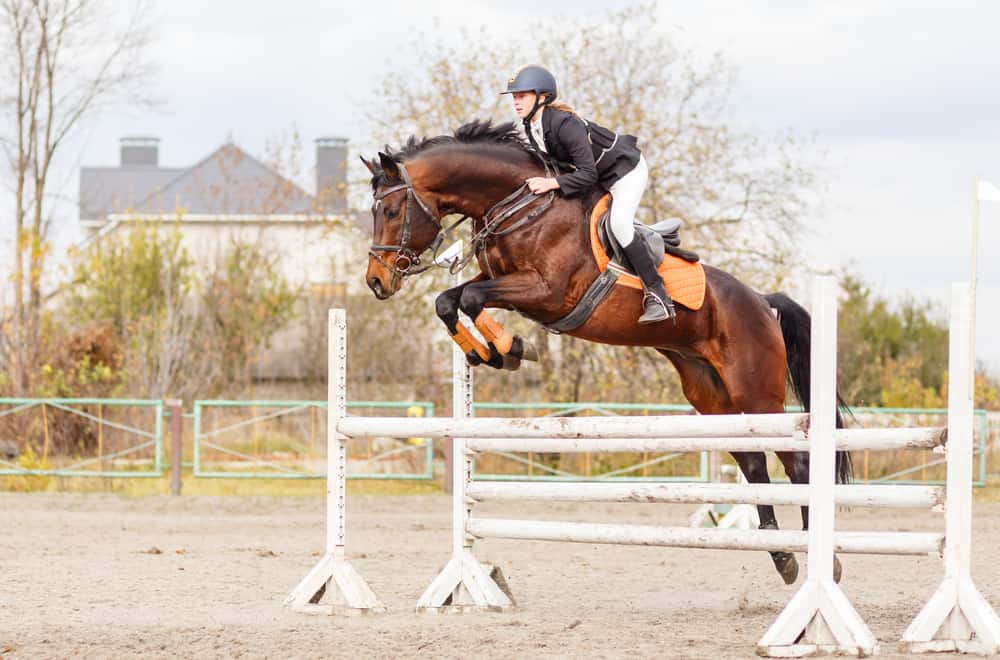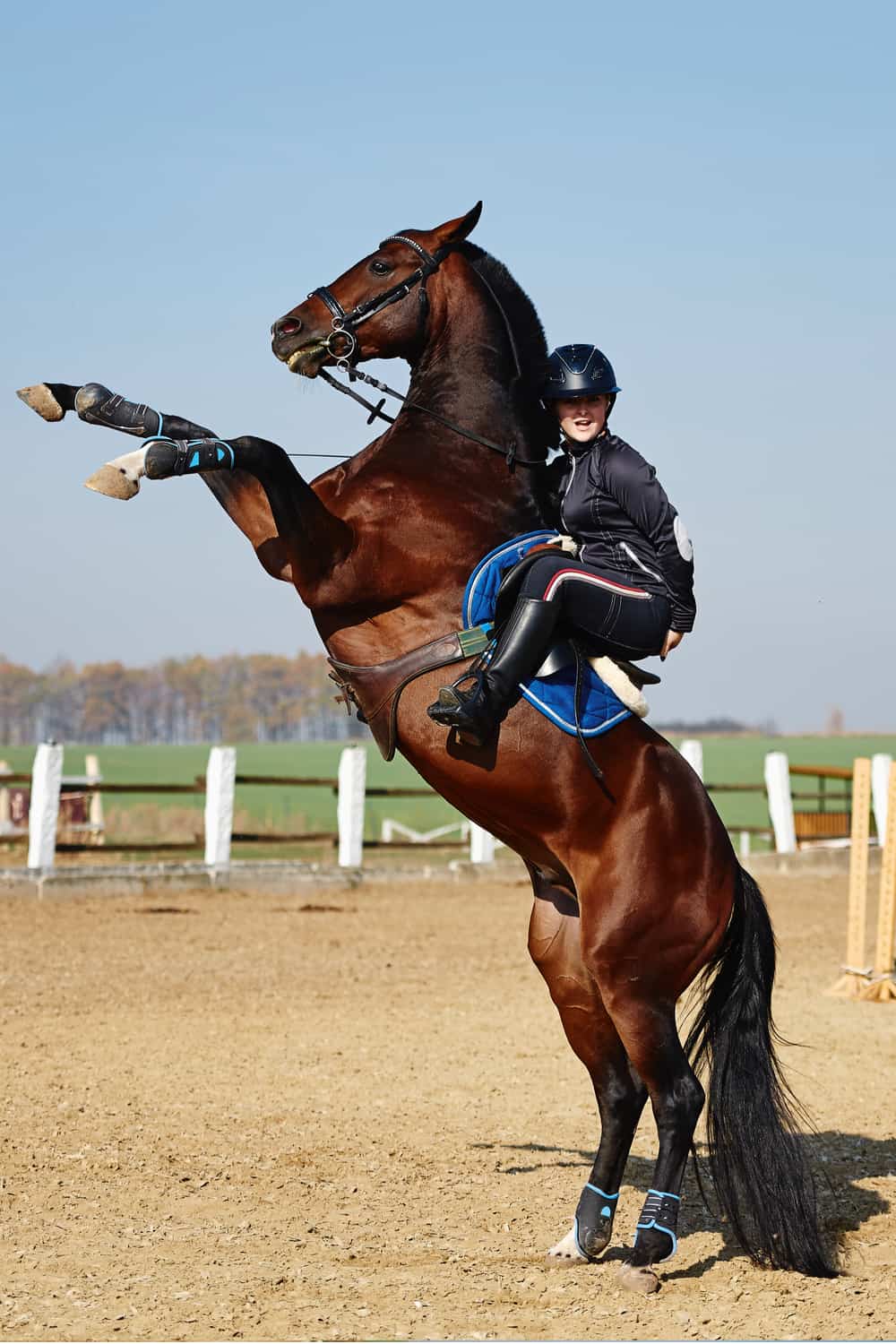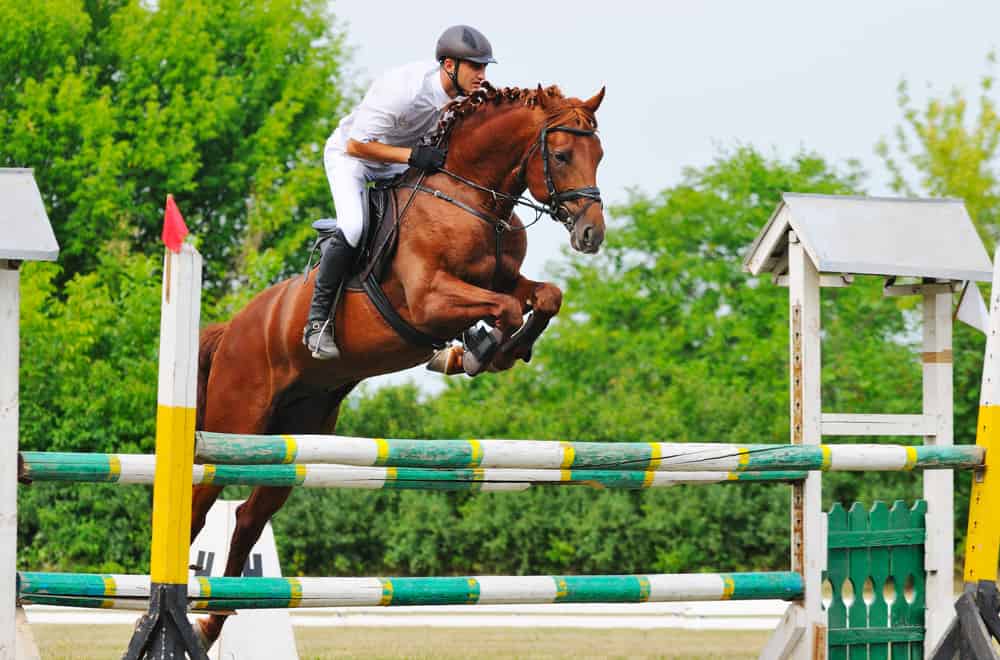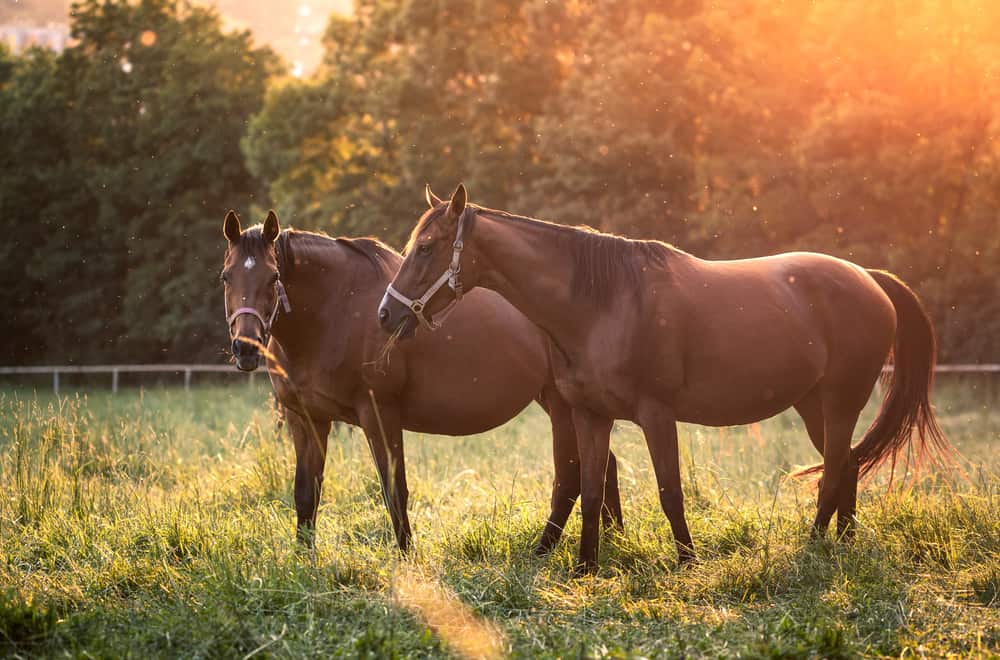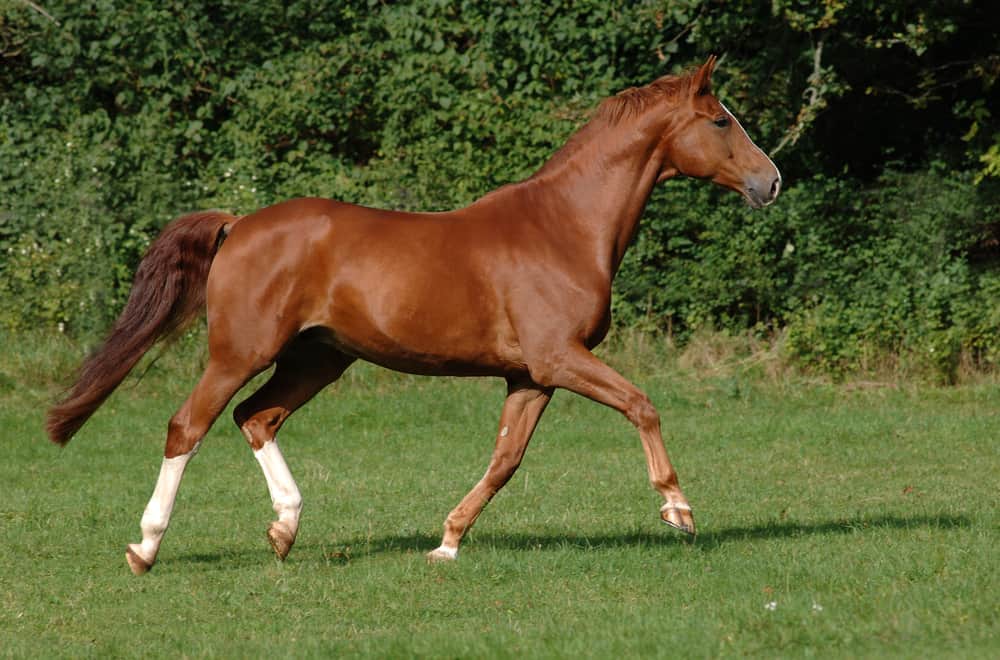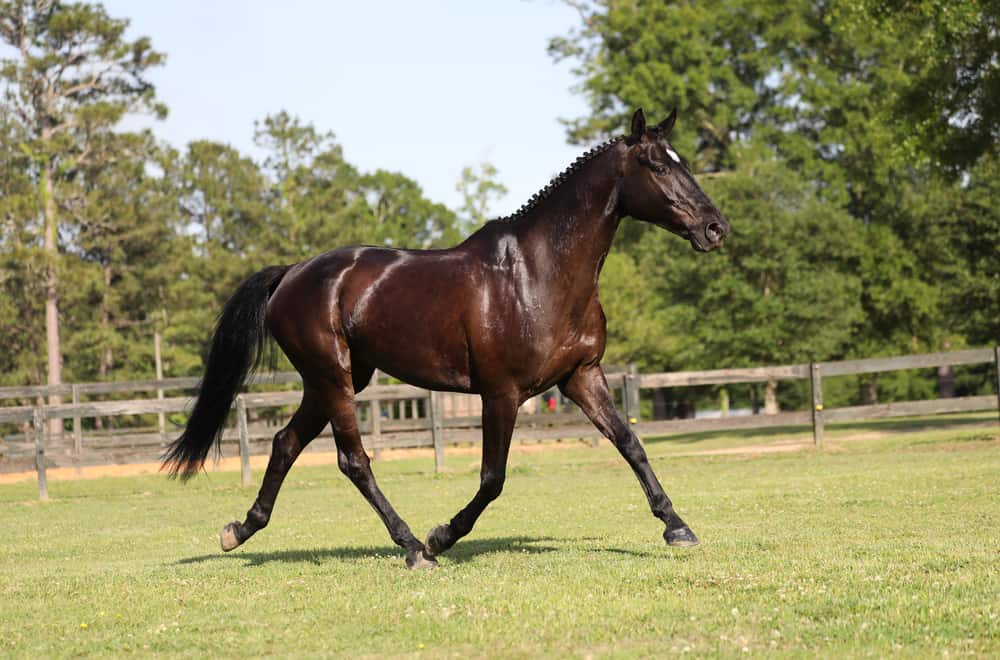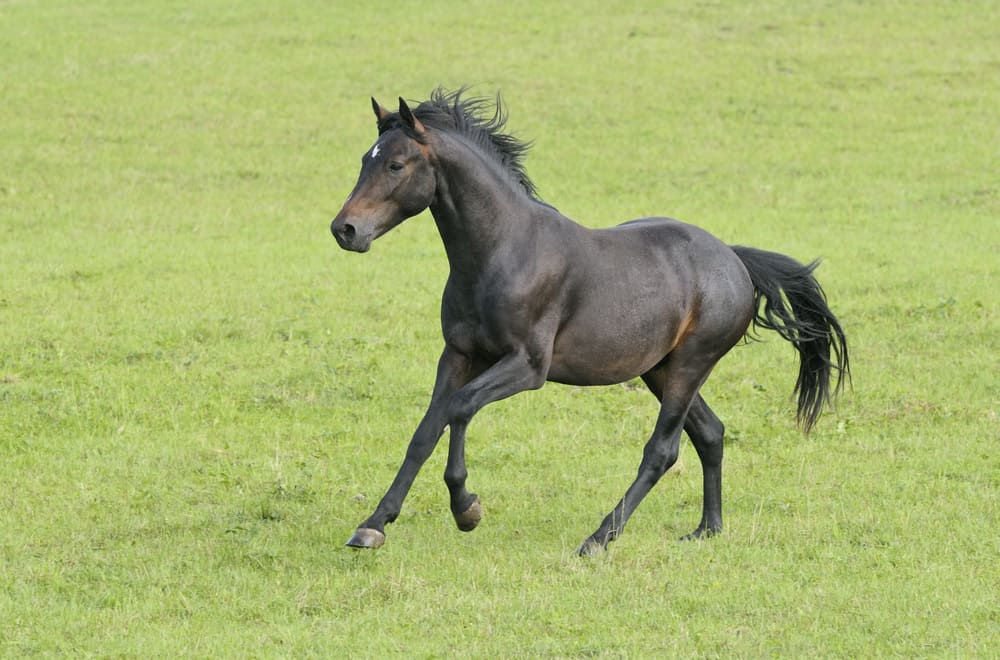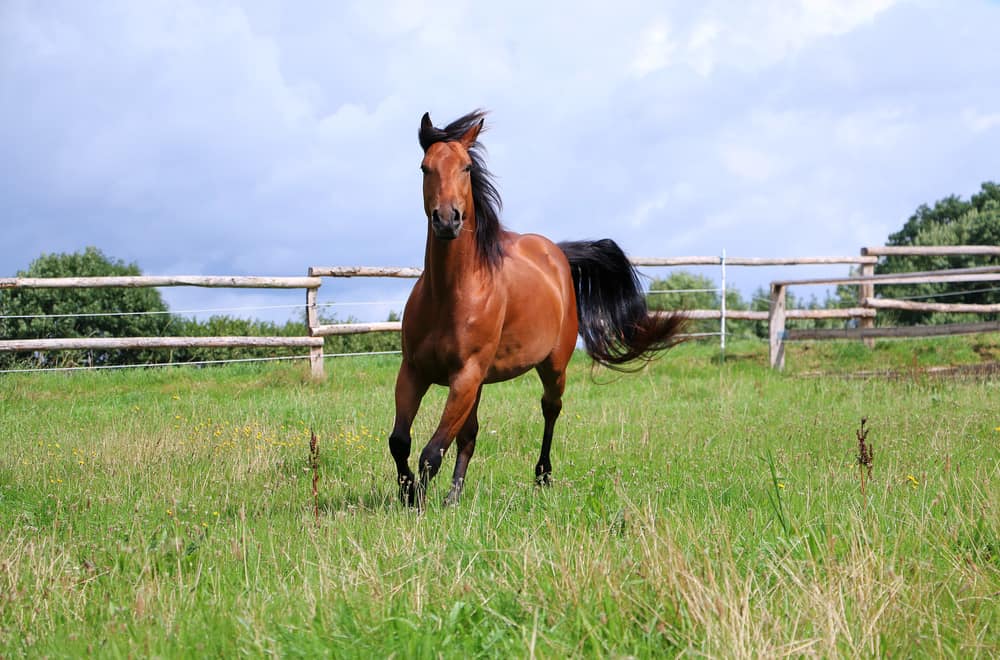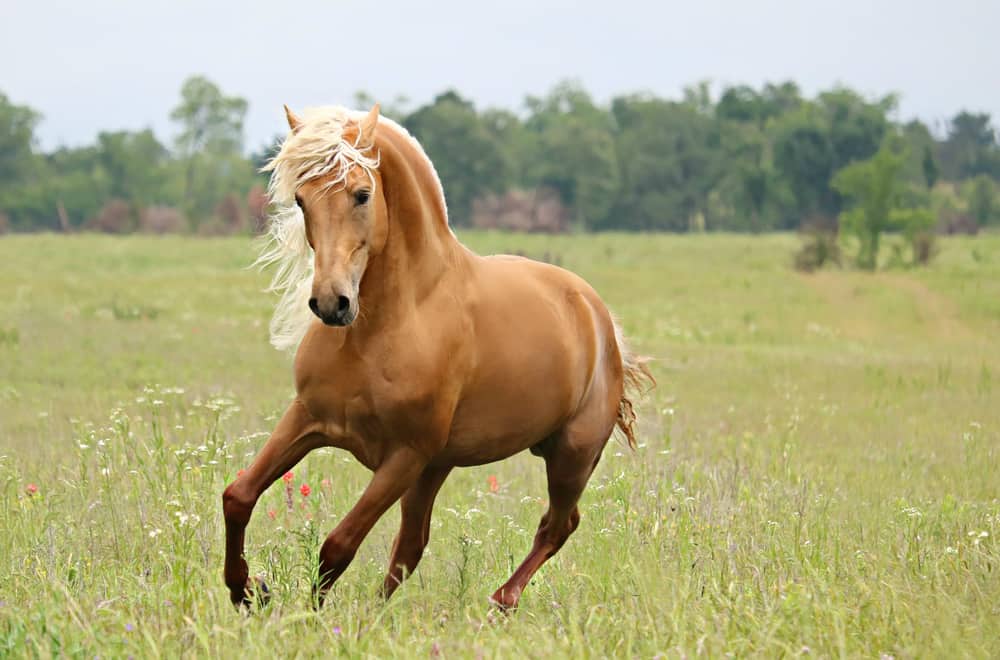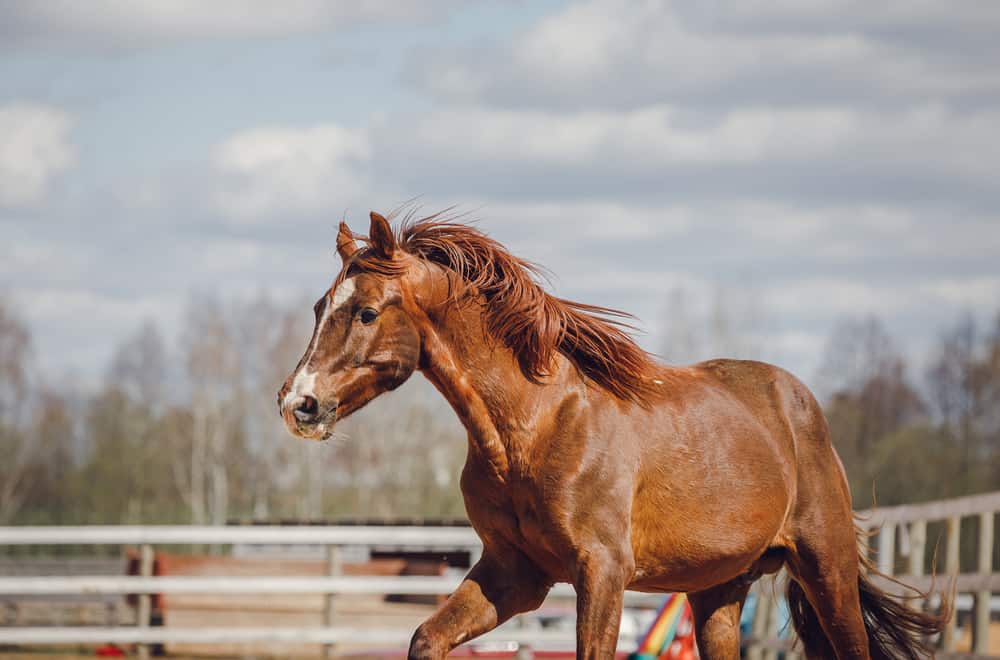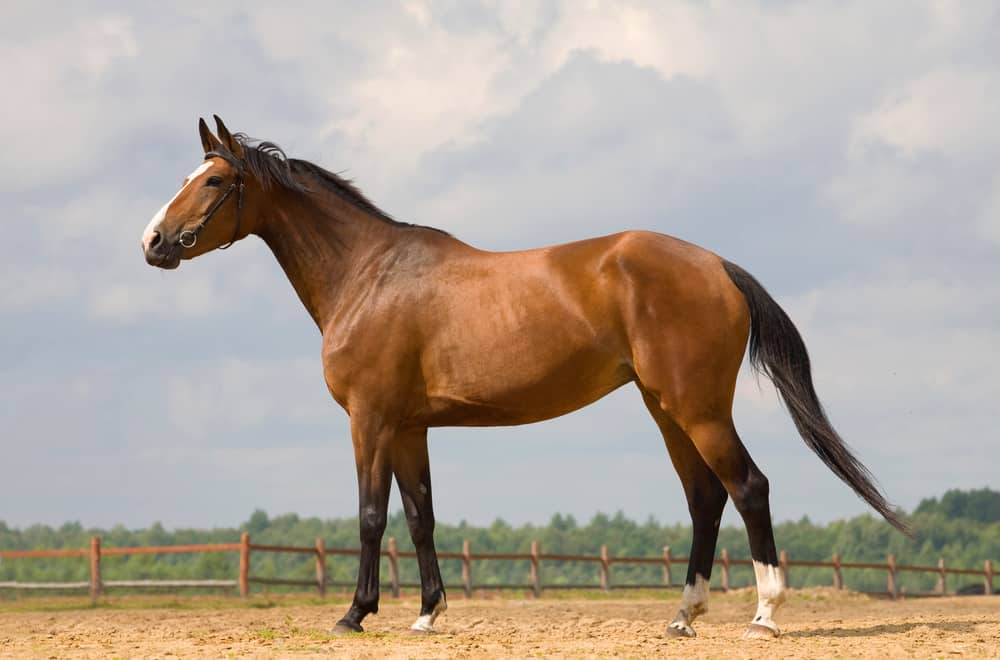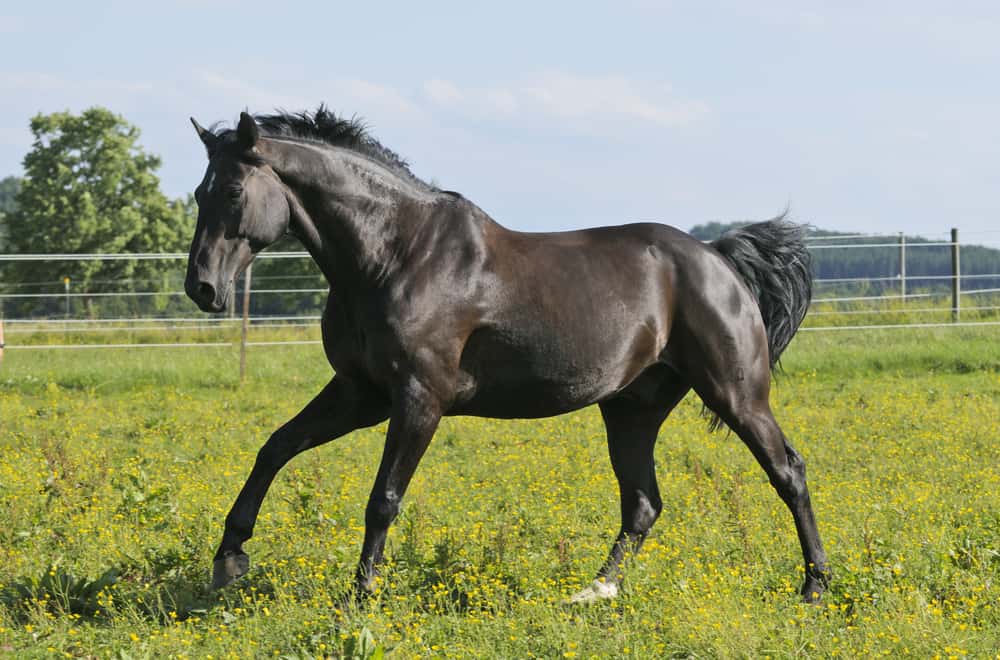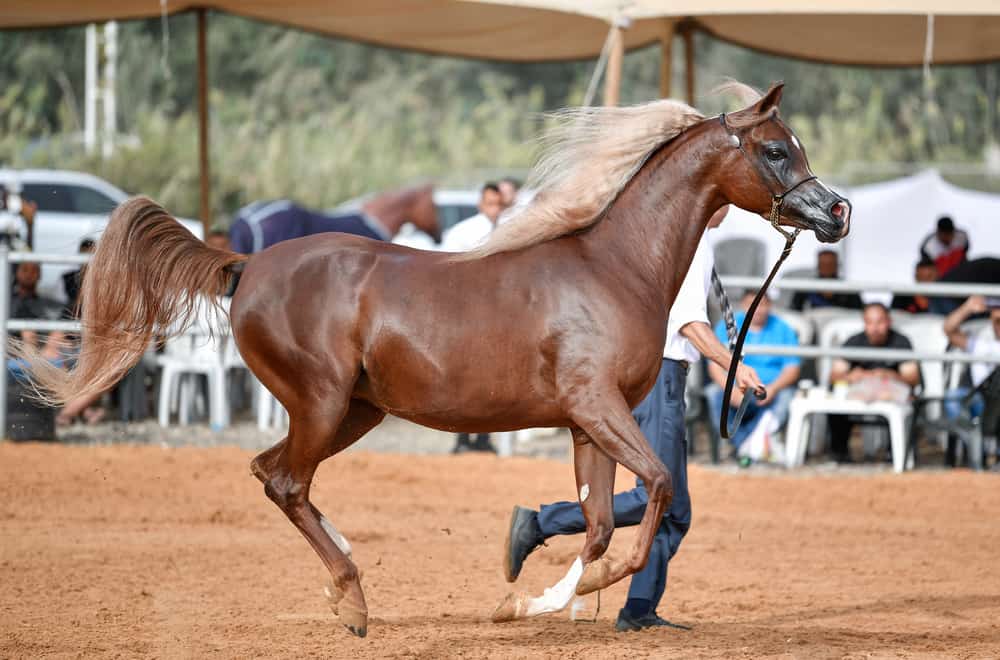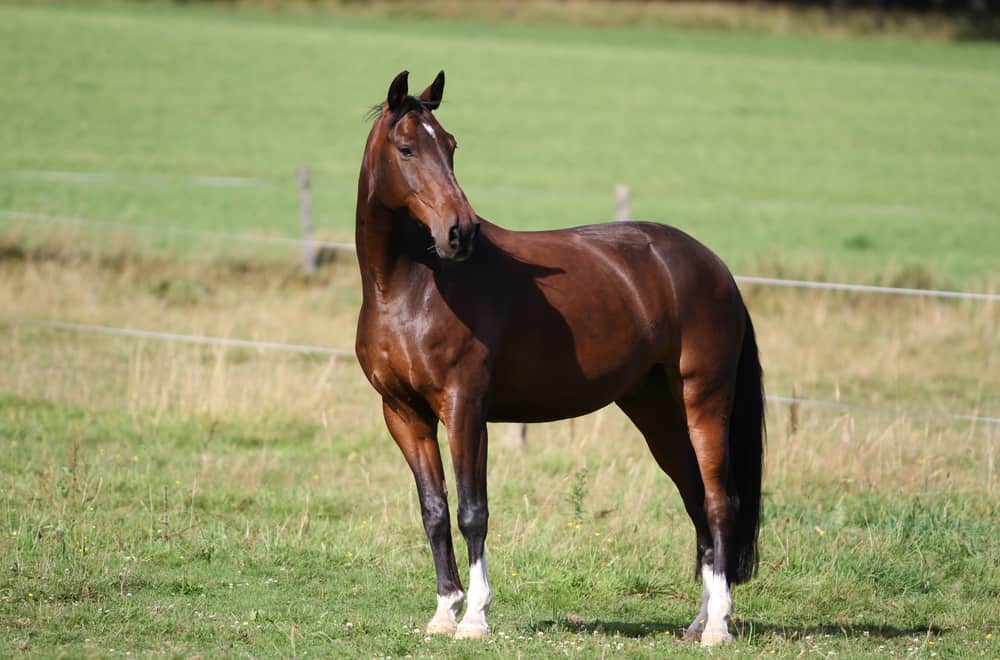Equestrian sports have existed for thousands of years with historical data that reaches back to the times of ancient Greece. Various skills and activities line the arena and competitive field with the evolution of equestrian sports.
The specific equestrian sport of jumping is a competitive show of horse and rider committing to clearing several jumping obstacles within a set time limit.
All horse breeds have the natural ability to jump, but this article aims to key in on the 12 Best Jumping Horse Breeds.
Discipline and Relationship
The key characteristics of a well-trained jumping horse will be most apparent by its discipline and its relationship with its rider.
From the time you acquire your horse, you must become a loyal and dedicated friend and trainer to your horse. This takes years of training and dedication, but it is the only way to confidently approach the competitive field with your equine companion.
Your horse will need to learn to follow your lead to enter a jumping competition. It will do this most naturally when you continually work to make it feel loved and cared for.
Practice is critical; however, you will need to prove yourself as a good leader with confidence-building techniques and providing it with adequate rewards.
Always keep in mind that your relationship with a horse is truly a privilege, and you want your horse, more than anything else, to associate you with peacefulness and fairness.
If you have dreams of stardom within the competitive equestrian community, remember the most important thing is always to be your horse’s friend.
Qualities of a Jumping Horse
Jumping events truly showcase the athleticism and agility of both horse and rider. With events fit for various levels of difficulty and experience, the competitive world is exceptionally welcoming to the horse breeds that seem to have a natural ability to get air.
Though smaller horses can indeed be fantastic jumpers, riders typically prefer a prospective jumper to be at least 16 hands tall. In addition to height, a jumping horse needs to meet specific conformation standards and be fast, agile, and brave.
Even the most excellent jumper faces a different reality upon entering the competitive arena. Besides an unfamiliar environment filled with new sounds, colors, and other distractions, the horse must still accept its challenge despite the strange and possibly shaking atmosphere.
For this reason, a good jumping horse must be adaptable. It should not be one to spook easily or handle stressful situations poorly. Besides adaptability, a jumping horse needs to be quick on its feet, make sound decisions, and use good form.
Types of Jumping Competitions
Jumping competitions have reached the Olympian level, although practice usually begins with a coach at a dedicated local stable. I’m not sure about you, but just the thought of being mid-air on horseback sounds exhilarating.
For jumping, riders wear the typical riding gear such as helmets, boots, and gloves; however, the horse must be fit with specific tacks such as a jumping saddle and bridle must be used.
In Show Jumping, a course designer prepares a course that displays between ten and twelve obstacles of varying degrees of difficulty. Rider and horse teams must clear each block without bumping any rails to complete the course.
Competition usually gets a bit more adrenaline-packed in the second go of the course, commonly referred to as a Jump Off. Here is where precision and skill must work seamlessly with speed. Again, competitors must master the course, attempting to beat the time limits of others.
Signing up for a Three-Day Eventer will not disappoint those seeking equestrian endurance sports. Rider teams will compete in dressage, jumping, and cross-country to complete this event.
The testament of will and power become ever so apparent as each horse and rider moves from one event to the next in this exciting competition of the fittest.
12 Best Jumping Horse Breeds
1.) Thoroughbreds
Thoroughbreds have rightly earned their place in the competitive arena throughout equestrian sports worldwide. From racing to jumping, these magnificent beasts do it all.
Thoroughbreds are quick learners and a suitable fit for any level of riding. These horses are also very loyal and sensitive to the needs of their riders, making them optimal teammates in and out of the arena.
Associated with high endurance and staying power, these horses are ready for the long run, and their naturally fit composure supports their need for speed agility.
That said, PracticalHorseman mentions that “Thoroughbreds jump a bit more flat and quick, which may make them a little less careful.” But don’t worry about this too much because this horse breed is flexible and can learn new tricks relatively quickly.
2.) Hanoverians
Today Hanoverian horses are bred explicitly for equestrian sports. Acquiring one of these horses is a significant financial investment, but you get what you pay for.
According to Hannoveraner Verband, these German-bred horses “have all times been counting among the most successful horse breeds worldwide in the Olympic disciplines dressage, showjumping, and eventing.”
The Hanoverian horse must undergo a rigorous inspection process to uphold the breed’s highest quality standards with a fairly stockier build than the Thoroughbred.
3.) Irish Sport Horse
If you are in America, you will typically have to arrange transport from Ireland or other parts of Europe for one’s acquisition. However, if you are prepared to do this, then be assured that you are about to get your hands on a very successful jumping breed.
Also known as the Irish Hunter, this horse has a calm and receptive demeanor, much like the Thoroughbred. And sporting a muscular body, this breed is well known across the equestrian community for its endurance and persistence.
4.) Dutch Warmblood
Still evolving as a breed and gaining popularity along the way, the Dutch Warmblood is “a very versatile horse,” according to EquusMagazine.
Exhibiting great promise in a range of equestrian sports, this warmblooded horse is noted by many to be easy to work with and is hardly ever spooked.
This breed is making a significant name in competition sports, especially jumping and dressage.
5.) Connemara
This large pony breed is still smaller than riders typically look for in a professional jumping horse. That said, it is an excellent alternative breed for smaller adults and younger riders and is often crossed with a larger breed to help preserve the sought-after qualities of the Connemara.
The Irish-born pony is exceptionally gentle, making them suitable for child handlers. Their short and stockier build is presented in a Horseaandhound article as a “compact, well-balanced riding type with good depth and substance and good heart room, standing on short legs, covering a lot of ground.”
6.) Quarter Horse
These horses are more common in western disciplines; however, do not be so quick to write them off for jumping. The Quarter Horse breed is found all across America, and people are attracted to their beautiful temperaments.
This breed is exceptionally responsive to people and is quick to learn. Do not overlook this breed if you are interested in a muscular breed that can react in various situations.
Perhaps the Quarter Horse breeds main attributes of courage, willpower, and strength, along with its willingness to train, which will help elevate this underdog to the big screens for riding.
7.) Morgans
The Morgan is another horse breed that may not be seen very often in the jumping arena. But, HorseRookie is excited to share that the breed’s talent is “enough to continue moving up the levels of jumping and a good choice for new riders due to their trainability and positive demeanor.”
Though on the smaller size for typical jumping horses, the exceptional conformation of this breed makes it a healthy prospect across the equestrian sporting landscape.
8.) Trakehner
The Trakehner has already made it to the international spotlight, meeting the typically preferred height and weight standards of riders pursuing competitive jumping.
HorseFactBook explains that the Trakehner breed is “often said to be Germany’s most elegant and handsome warmblood, [it] is loved for its style as well as its jumping ability.”
9.) Westphalian
With roots that trace back to the First King of Prussia, the Westphalian breed has evolved from draft horse to athletic horse with a bit of Thoroughbred crossing in between.
The character of the Westphalian horse breed is “courageous and spirited, highly willing and docile.” These horses are mainly healthy animals, highly trainable, and a great companion for any level of rider.
10.) Oldenburg
As the “largest and heaviest of all warmblood breeds,” the Oldenburg breed are kind-natured and relatively easy to train. Suited for various experience levels, the species is no longer an underdog in the sports arena.
Having been crossed with lighter and faster breeds, the Oldenburg breed now has the same advantage as other well-known horses that exude competitive strength.
11.) Arabians
I would be committing serious equestrian foul play if I did not put Arabian horses on this list. This fiery breed is well-known for its extreme levels of athleticism and prowess.
These gorgeous animals are brilliant, and riders often team up with this breed to compete in some of the world’s most significant and most challenging endurance events.
Besides their rich history, this breed is exquisite, highly-spirited, energetic, and ready for any obstacle placed in front of them.
12.) Holsteiner
As probably the lowest popularity breed on this list, its medieval roots are perking up spectators worldwide as it continues to place amongst various jumping competitions.
The Holsteiner breed tends to have a much longer lifespan than others, living between 35 and 40 years. The Holsteiner breed is also ever-evolving, with breeders attempting to produce a lighter, quicker, and more versatile horse.
Horse Health for Jumping
So there you have it. I have listed the 12 Best Jumping Horse Breeds, but you must understand that for a horse to enter such a challenging competition, it must be prepared and trained for the physical stress that its body undergoes.
Injury is sometimes inevitable in the world of sports, and it usually happens when least expected and at the worst possible time in one’s career. The same is true in the world of equestrian sports.
Horses are susceptible to several illnesses and ailments, some breed-specific, others due to negligence, and some because of the pure strain and stress placed upon their bodies.
And any time speed is involved, it only takes one seemingly insignificant move to put competition on the back burner and pursue long-term therapy and care.
Running against a specified time block increases the risk for jumpers and riders alike. As speed increases, the level of a horse’s agility is exponentially higher. And as I already mentioned, one slight misstep or overstep could quickly be grounds for injury.
The landing impact is a big concern for jumpers. Every landing places additional stress on the anatomical features of the horse structure, and the stakes get higher the bigger the jump gets.
Then again is the question of repetition. Performing the same stressful movements over and over raises the probability that your horse may get hurt.
The ligaments and tendons of horses are easy targets for strain in jumpers. And worse of all, an injury could include fractures and breaks that are highly debilitating for a horse.
Recovery for a three-legged horse will depend on which part of the leg broke, the severity of the fracture, and the horse’s age and overall wellness.
In an earlier article I wrote, I found one doctor of veterinary medicine who deciphered between a break above and below the fetlock. A break above the fetlock (or ankle) is more severe and far more challenging to treat. However, a break below the ankle increases the horse’s chances of recovery, but the horse is at risk for further complications, such as laminitis.
Incomplete fractures exist when the bone in question has cracked under stress but has not broken entirely. If a horse is diagnosed with an incomplete fracture, its chances of full recovery and return to service are higher.
Be Safe and Take Care of Those Jumpers
In any case, I wish the best for you and your jumping career. If you choose one of the 12 Best Jumping Horse Breeds from my list, you will have a loyal and versatile horsey companion who will work hard.
In return, you need to promise that you take exceptional care of your horse and do everything in your power to maintain its health and wellness.
Would you mind leaving any questions about the best jumpers in the comment section below?
